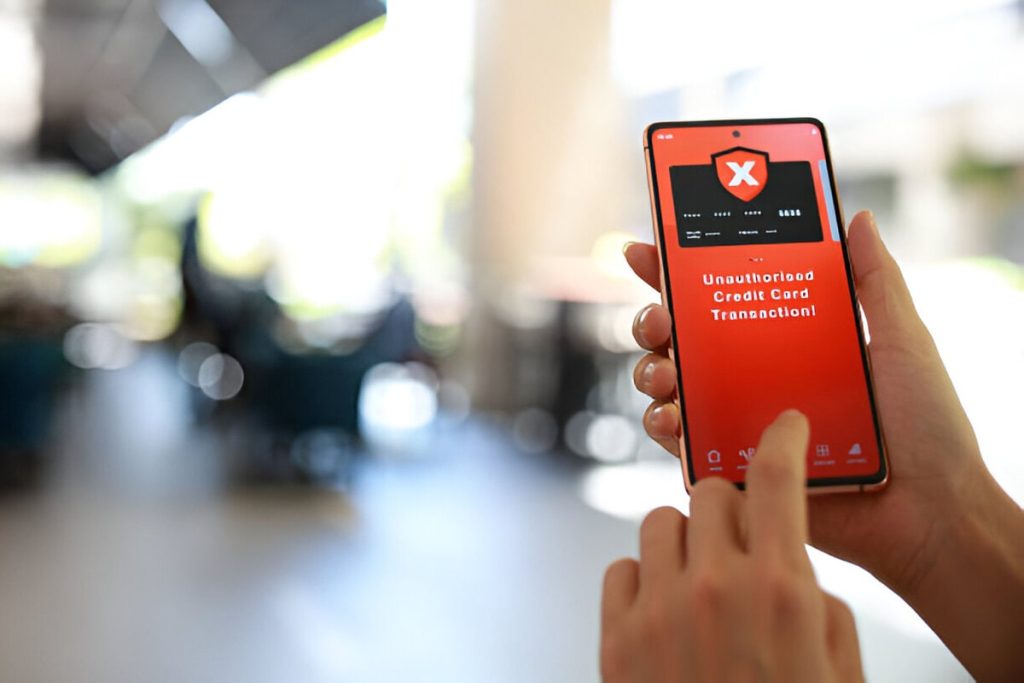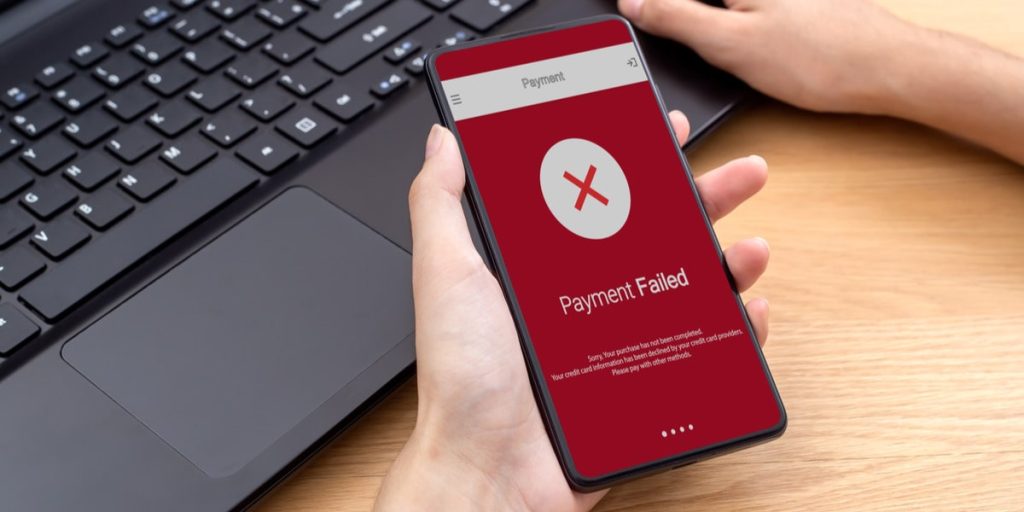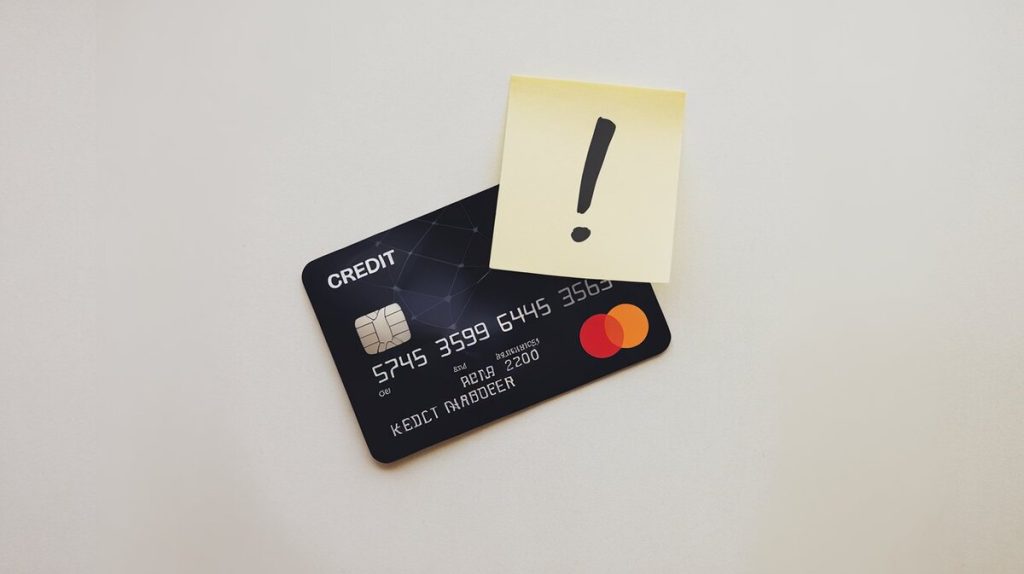Credit card fraud has become a major concern for consumers and businesses. In 2023, card-not-present (CNP) fraud alone resulted in over $9.49 billion in losses. This article covers the common types of unauthorized transactions, steps to take if one occurs, the bank investigation process, and prevention methods. With relevant facts and clear steps, we aim to give you a comprehensive view of managing and avoiding unauthorized transactions.
Common Types of Unauthorized Transactions
Several types of unauthorized credit card transactions pose significant risks:
- Card-Not-Present (CNP) Fraud: This happens when the physical card isn’t used, typically in online or phone transactions. CNP fraud represents over 80% of all credit card fraud and caused $9.49 billion in losses in 2023.
- Account Takeover: Fraudsters take control of an account to make unauthorized purchases. In 2023, this type of fraud surged by 354%, resulting in almost $13 billion in damages.
- Skimming: Criminals use devices to steal card data from ATMs or point-of-sale terminals. The cost of skimming exceeds $1 billion annually.
- Phishing Scams: Hackers use fake emails or websites to collect credit card details, leading to unauthorized transactions.
Immediate Actions for Unauthorized Transactions
When you discover an unauthorized transaction, take immediate action to limit potential damage. Here’s what to do:
- Contact Your Bank: Report the suspicious activity immediately. Banks typically investigate within 10 business days. If more time is needed, they issue a temporary credit within 45 days.
- Review Your Account: Check your recent transactions for other fraudulent activities.
- Freeze Your Credit: Prevent further unauthorized use of your card while your claim is being investigated.
- Dispute the Charge: Under U.S. law, your liability for unauthorized credit card transactions is limited to $50, although many issuers offer zero-liability protection.
Table 1: Liability for Unauthorized Transactions
| Card Type | Liability Cap |
|---|---|
| Credit Card | $50 or less (typically zero liability) |
| Debit Card (reported within 2 days) | $50 |
| Debit Card (reported after 2 days) | Up to $500 |
| Prepaid Cards | Varies by issuer |

How Banks Investigate Unauthorized Transactions
Banks use a systematic approach when investigating unauthorized transactions:
- Fraud Monitoring: Advanced fraud detection systems flag unusual activity. These systems analyze transaction amounts, patterns, geolocation, and behavior.
- Evidence Collection: Banks collect transaction data, IP addresses, timestamps, and other indicators to assess the claim.
- Decision-Making: Based on the collected evidence, the bank decides whether to refund the customer or take legal action if necessary.
Most cases are resolved within 45 days. However, the timeline depends on the complexity of the transaction, the number of claims, and external cooperation with law enforcement.
Preventative Measures for Consumers
Consumers should adopt practical security measures to protect against unauthorized transactions:
- Use Multi-Factor Authentication (MFA): MFA adds an extra layer of security by requiring additional verification beyond a password.
- EMV Chip Cards: EMV chips make it harder for criminals to clone cards.
- Set Transaction Alerts: Many banks offer real-time alerts for each transaction, enabling you to quickly notice unauthorized charges.
- Monitor Accounts Regularly: Regularly check transactions for any unfamiliar activity.
Table 2: Fraud Prevention Technologies
| Technology | Function |
|---|---|
| EMV Chip Cards | Creates a unique code per transaction |
| Multi-Factor Authentication | Adds a second verification step |
| Transaction Alerts | Sends real-time notifications of account activity |
| Tokenization | Replaces sensitive data with a token for transactions |

Legal Protections and Financial Ramifications
The Fair Credit Billing Act (FCBA) offers critical protections to consumers in the U.S. Under this law, consumers’ liability for unauthorized transactions is capped at $50, although most issuers have zero-liability policies. Debit card users face different terms: they can be held responsible for up to $500 if fraud is reported after two days.
For businesses, chargebacks—where funds are returned to the cardholder after a successful dispute—pose a significant financial burden. Merchants face fees and potential loss of revenue. This makes robust fraud prevention essential.
Chargeback Process and Business Prevention Measures
Chargebacks are a last resort for consumers, but they have a heavy impact on businesses. Understanding how chargebacks work and adopting strategies to prevent them is crucial for merchants.
- Customer Dispute: The consumer reports an unauthorized charge to the bank, initiating a chargeback process.
- Bank Investigation: The bank reviews transaction data and determines liability.
- Chargeback Decision: If the bank rules in favor of the consumer, funds are returned, and the merchant is charged.
Many businesses partner with trusted fraud prevention platforms to reduce chargebacks. Merchanto.org, a partner of VISA and MasterCard, offers chargeback prevention tools designed to minimize fraudulent claims and protect merchant revenue. Learn more about their services here.
Table 3: Chargeback Prevention Strategies
| Strategy | Benefit |
|---|---|
| Clear Return Policies | Reduces chargeback disputes |
| Real-Time Fraud Detection | Flags suspicious transactions before they escalate |
| 3D Secure for Online Purchases | Provides additional transaction verification |
| Partnering with Fraud Prevention Providers | Reduces overall exposure to fraudulent claims |
Best Practices for Businesses to Avoid Chargebacks
Businesses can minimize their exposure to chargebacks by following these practices:
- Transparent Policies: Display clear return and refund policies on your website to prevent disputes before they escalate.
- Fraud Detection Tools: Use AI-driven fraud detection tools to flag and prevent suspicious activities. Payment processors like Checkout.com and Stripe offer real-time monitoring services.
- Verification Tools: Implement 3D Secure to verify customer identity during online transactions.
- Transaction Reviews: Regularly review high-risk transactions manually to avoid fraudulent sales.
Conclusion
Unauthorized transactions, if not dealt with promptly, can cause significant financial damage to both consumers and businesses. Understanding the different types of fraud and knowing what actions to take can mitigate the damage. Consumers should immediately report suspicious transactions and monitor accounts. Businesses must adopt fraud prevention tools and clear policies to reduce chargebacks and limit revenue loss.
Stay proactive—monitor your accounts and apply these protective measures to safeguard your finances.



